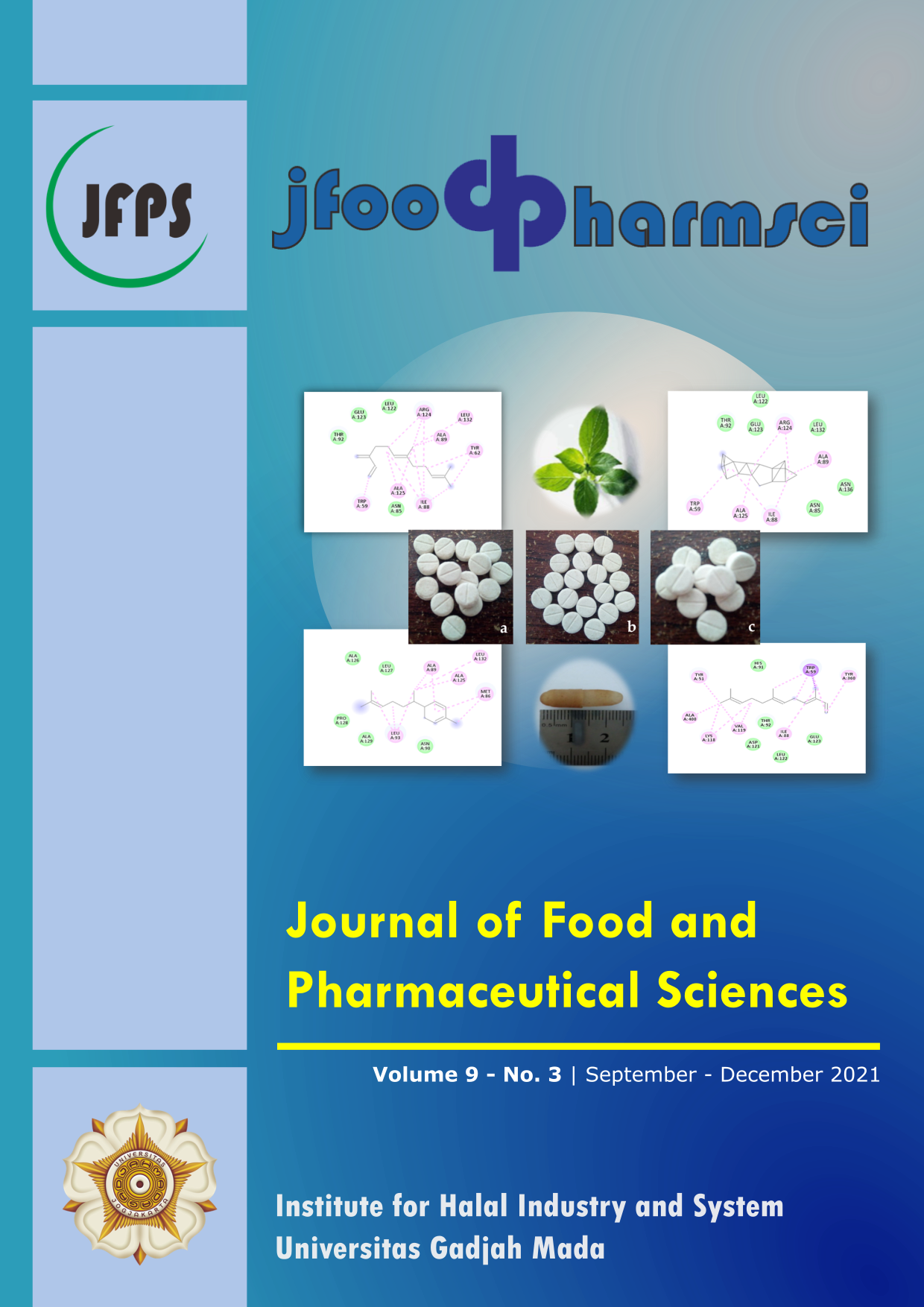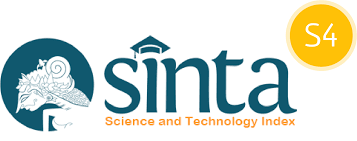Antihypertension Activity Test oOf Red Ginger (Zingiber officinale Var. Rubrum Roscoe) Ethanol Extract by In Silico Method
Abstract
Hypertension or high blood pressure is a condition when there is an increase in blood pressure above the normal threshold (> 140/90 mmHg). The bioactive compounds in red ginger are dominated by the terpene group which has the ability to inhibit the action of Angiotensin Converting Enzyme (ACE-inhibitor). The interaction between ACE-inhibitory peptides can be predicted by the in silico method. The in silico method was used to predict the interaction and binding energy between bioactive compounds in red ginger ethanol extract (ligand) and ACE protein (receptor) which acts as an antihypertensive. The results of GC-MS obtained as many as 5 compounds (zingiberene, farnesene, ß -sesquiphellandrene, alpha-curcumene and trans-beta-farnesene. The docking results showed the lowest binding energy values for each compound sequentially for ACE-trans beta farnesene, ACE-alpha curcumene, ACE-zingiberene, ACE-farnesene, ACE-beta sesquiphellandrene are -5.14 kcal/mol, -5.61 kcal/mol , -6.20 kcal/mol, -5.66 kcal/mol, and -6.55 kcal/mol. Based on these results, the lowest bond energy among the 5 compounds was -6.55 kcal/mol at ACE-beta sesquiphellandrene docking, so the red ginger ethanol extract can be proposed and tested further as a clinical candidate for antihypertensive drugs.
































